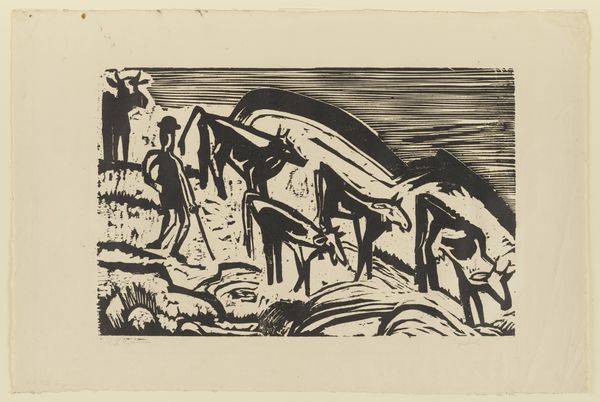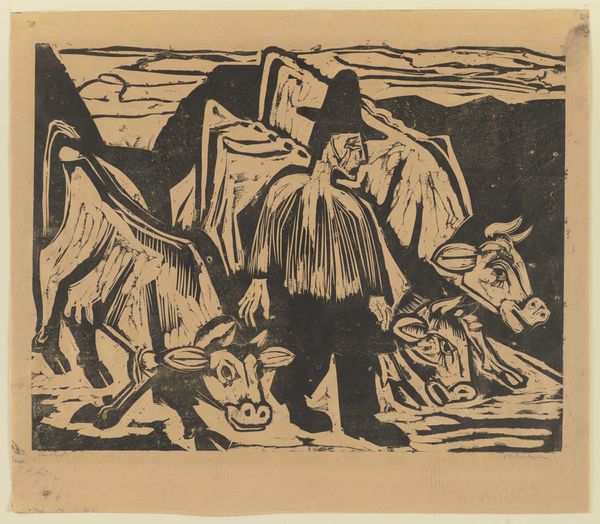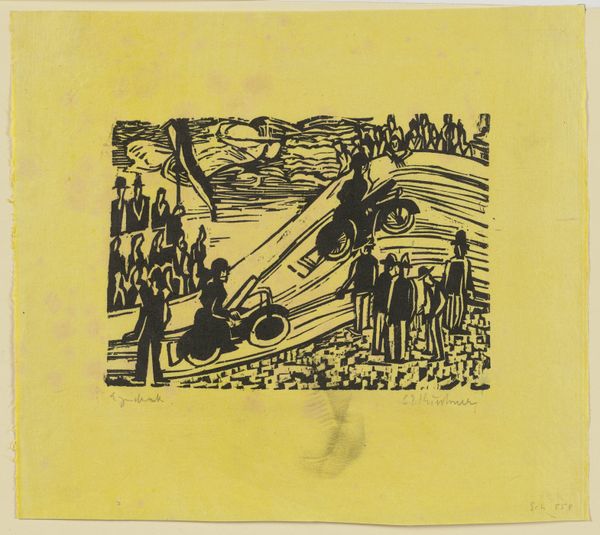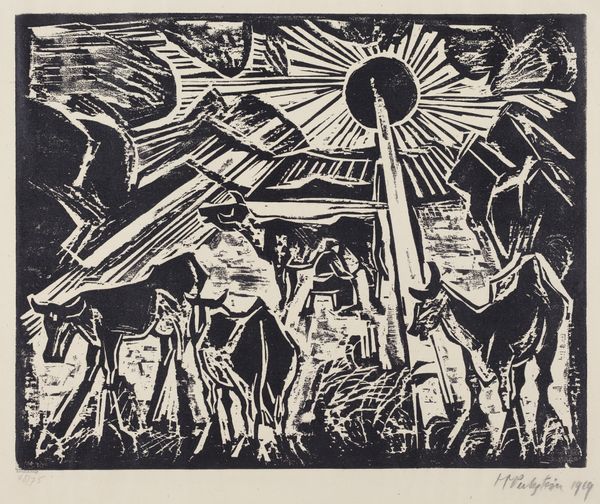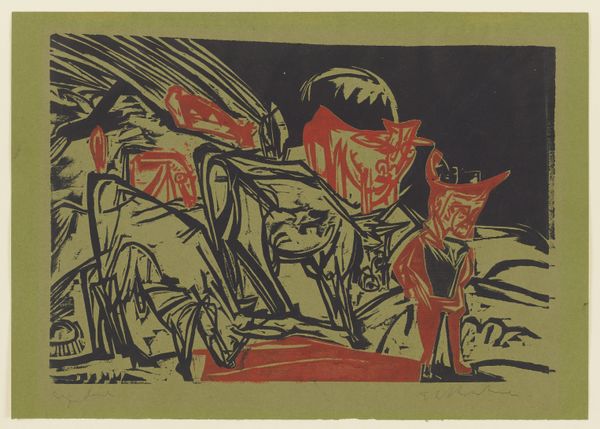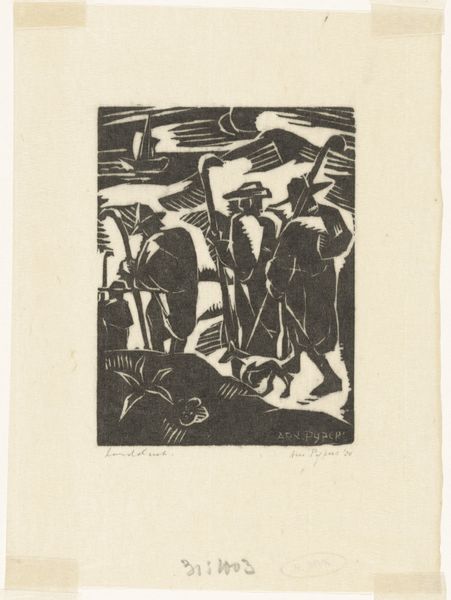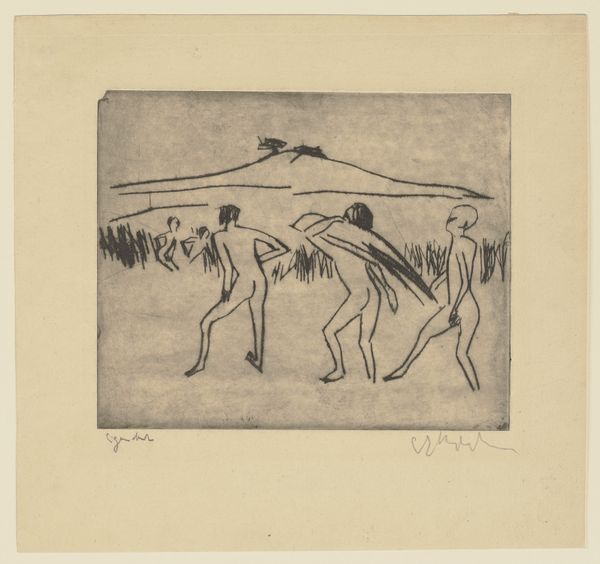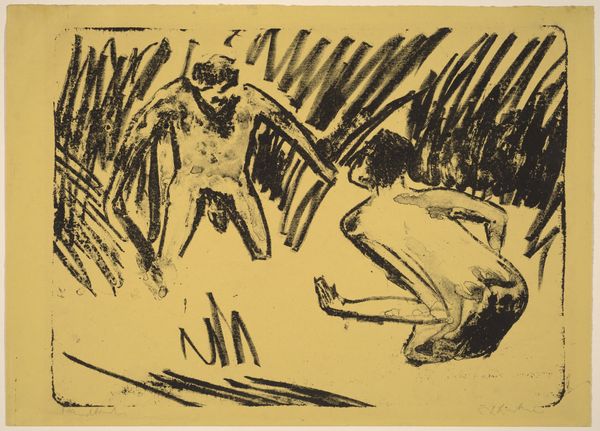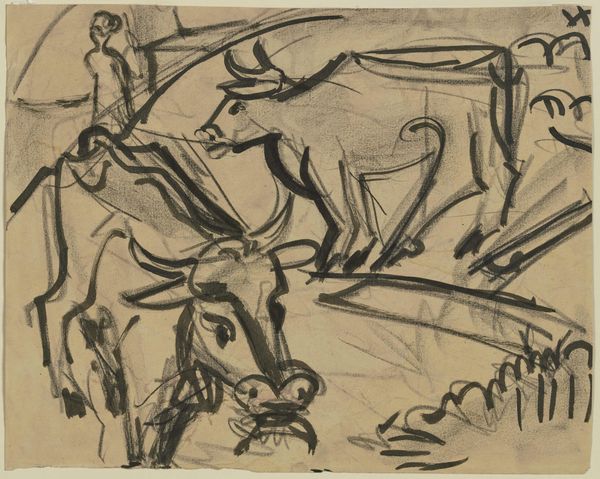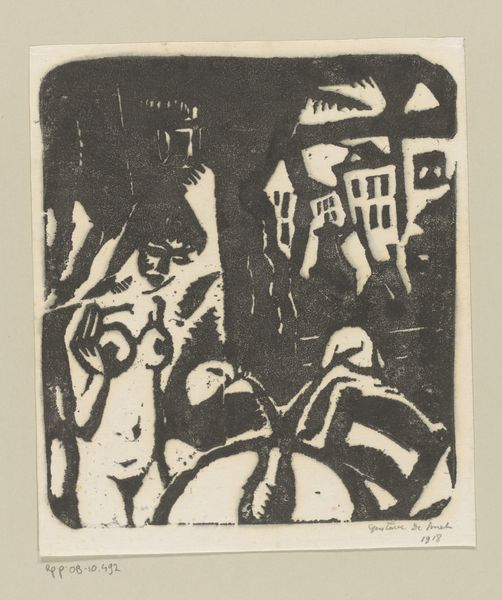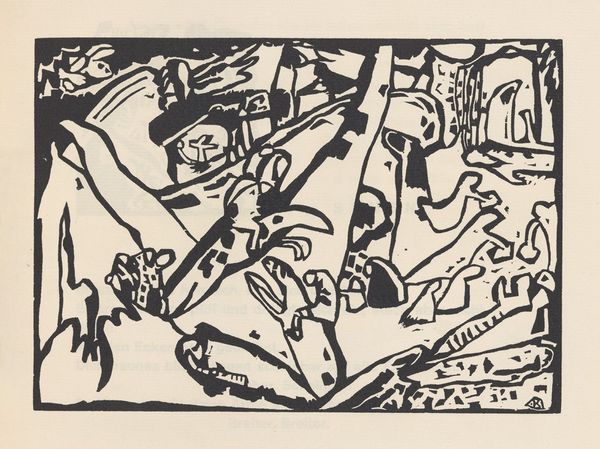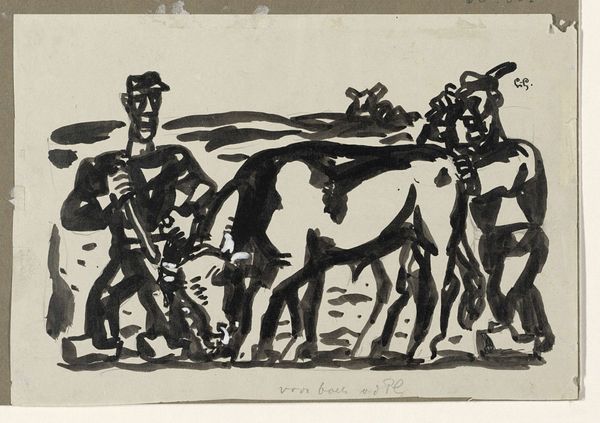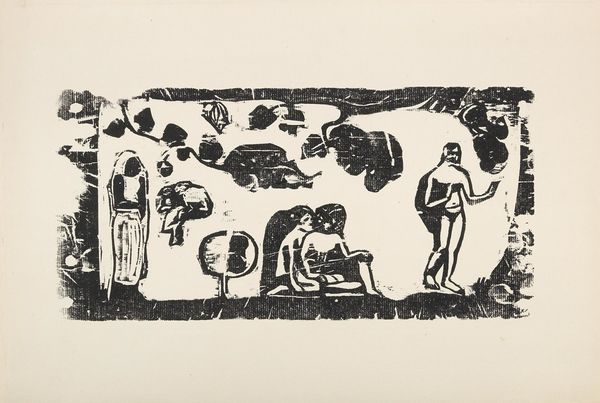
drawing, print, woodcut
#
17_20th-century
#
drawing
#
narrative-art
# print
#
german-expressionism
#
figuration
#
german
#
linocut print
#
expressionism
#
woodcut
Copyright: Public Domain
Curator: This woodcut by Ernst Ludwig Kirchner, made in 1915, is titled *Artilleristen beim Pferdebewegen*, or Artillerymen Exercising Horses. It’s currently held at the Städel Museum. What’s your immediate reaction to this image? Editor: My immediate impression is one of unease, almost dread. The stark contrast and angular forms, particularly the distorted figures of the horses and the stoic faces of the men, create a feeling of tension. There’s a lack of grace that feels intentional. Curator: Exactly. Consider that this work was created during the First World War. Kirchner volunteered but was deemed unfit for active service and assigned to driving duties. The experience profoundly impacted him, triggering a mental breakdown. This image reflects that trauma. Editor: It certainly seems to subvert the traditional heroic portrayal of military might. The men aren't idealized; they appear almost robotic, extensions of the war machine itself. The animals also lack vitality, a symbol of being subjugated. Curator: Right. And this work's context within German Expressionism, which sought to convey subjective experience through distorted forms and heightened colors, helps illuminate Kirchner’s inner turmoil. Think about the psychological impact of war on identity and masculinity during this period. What statements might Kirchner be trying to make? Editor: It’s a commentary on the dehumanizing effect of war. There is nothing inherently heroic about this service and highlights the way that individuals, both people and animals, can be coerced to act out an agenda and/or support political aims. Kirchner presents it so matter-of-factly but this does not lessen its grimness. Curator: Absolutely. This piece serves as a poignant critique of war and its lasting damage, both to individuals and society as a whole. We can see it as a commentary on trauma and disillusionment. Editor: Well, seeing how Kirchner’s personal experiences shape his artwork is impactful, offering a critical counterpoint to celebratory war imagery. It prompts contemplation about the human cost often obscured by propaganda and highlights the importance of art as a form of dissent.
Comments
No comments
Be the first to comment and join the conversation on the ultimate creative platform.
